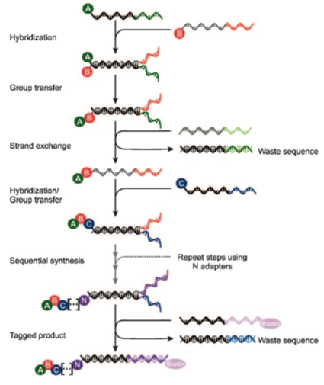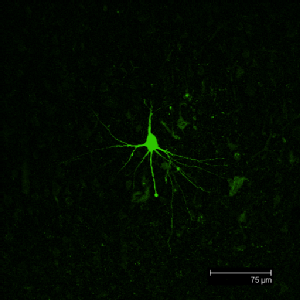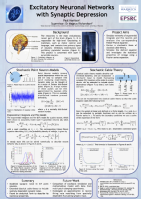MSc Mini Projects
Mini Project 1: DNA Encoded Materials

Chemical reactions have been traditionally carried out by mixing a specific set of reactants in high concentrations (mM to M) so a large yield of the desired product will be produced via random intermolecular reactions. In contrast, nature controls highly selective chemical processes using reactants in low concentrations (nM to μM) by adjusting their effective molarity using macromolecular templates. DNA templated synthesis (DTS) is a technique modelled on this natural process. The mechanism of DNA hybridisation is used to hold two reactive groups in close proximity, increasing their effective molarity and allowing them to undergo a chemical reaction. Since the hybridisation of complementary DNA is energetically favourable it can occur spontaneously at very low concentrations. The specificity of DNA interactions ensures that unwanted reaction products are less likely to be produced.
The work done in this project formed part of a collaborative effort between a number of universities, including Warwick, entitled The Ribosome Project. The aim is to build a synthetic ribosome that takes advantage of DNA templated chemistry to selectively synthesise an oligomer from a set of specific building blocks. The purpose of this project was to continue previous work by McKee et al. (2010), using the mechanism shown on the right. The aim was to use multistep DTS to synthesise a four unit conjugated oligomer, utilising a Wittig reaction to facilitate the group transfer. The middle section of the oligomer, poly(p-phenylene vinylene), can in principal be of any length, though the target here was only three units to test this principal.
Supervisors
Dr Phillip Milnes and Professor Rachel O'Reilly
Mini Project 2: Excitatory Neuronal Networks with Synaptic Depression
A wealth of mathematical models are available to describe the behaviour of neurons. These range from the reduced integrate-and-fire models first derived by Lapicque in 1907 to biophysically detailed Hodgkin-Huxley type models. There are also spatially dependent models that attempt to recreate the behaviour of the dendritic tree, such as Rall's cable model, which attempts to recreate the passive properties of a dendrite by likening them to an electrical wire.
The aim of this project was to first simulate networks of exponential integrate-and-fire neurons and analyse the corresponding Fokker-Planck equation. Next, a spatial component was added in the derivation of a stochastic form of classical cable theory. Finally, the derived equation was simulated and the statistical properties of voltage investigated using a Fourier series expansion.
Supervisor
Mini Project 3: Morphological and Electrophysiological Investigation into Neocortical Interneurons

The neocortex is the most evolutionary recent part of the brain, located in the outermost part of the cerebral hemispheres, and is heavily involved in high level functioning such as language, motor control, and spatial reasoning. The neocortex is divided into six layers with layer I being the outermost and layer VI the innermost. Approximately 80% of neocortical neurones are excitatory pyramidal neurons, which are relatively anatomically and electrically uniform. The remaining neurons, called interneurons, are generally inhibitory and are very varied in their characteristics.
Despite this diversity there are some general features common to inhibitory interneurons. Their axons tend not to project outside the region of the brain in which they lie, but rather arborise within a single cortical column or project laterally across columns. Furthermore, they generally have aspiny dendrites and can receive both excitatory and inhibitory inputs into their somata. There are some types of interneuron that are excitatory. For example the glutamatergic spiny stellate cell, found in the primary sensory regions of the layer IV neocortex, has an axon projecting up to layer II/III that passes on information from thalamic input.
The purpose of this study was to investigate various types of interneurons in layer V of the neocortex and to compare their morphological and electrophysiological properties. This data will be used in future work to calculate neuronal properties, such as the membrane time constant and spiking threshold voltage, along with morphological characteristics for use in spatially dependent mathematical models.

